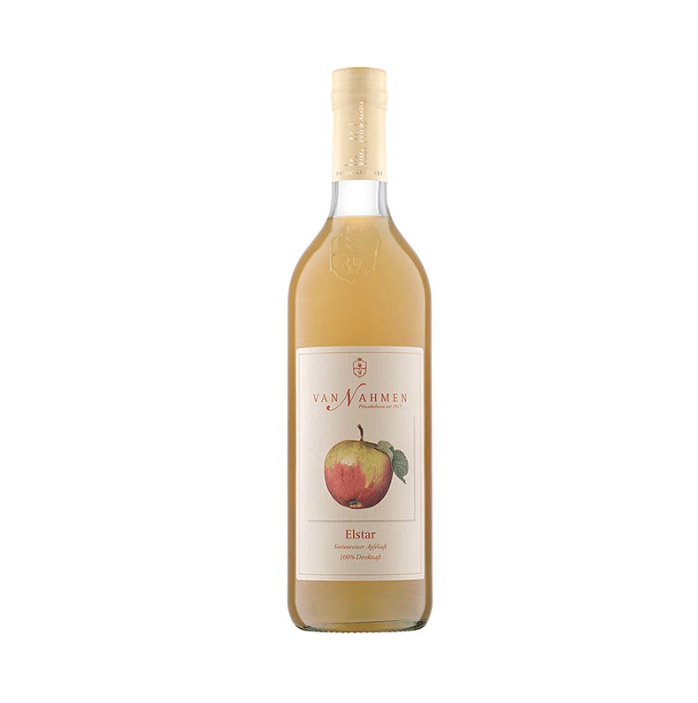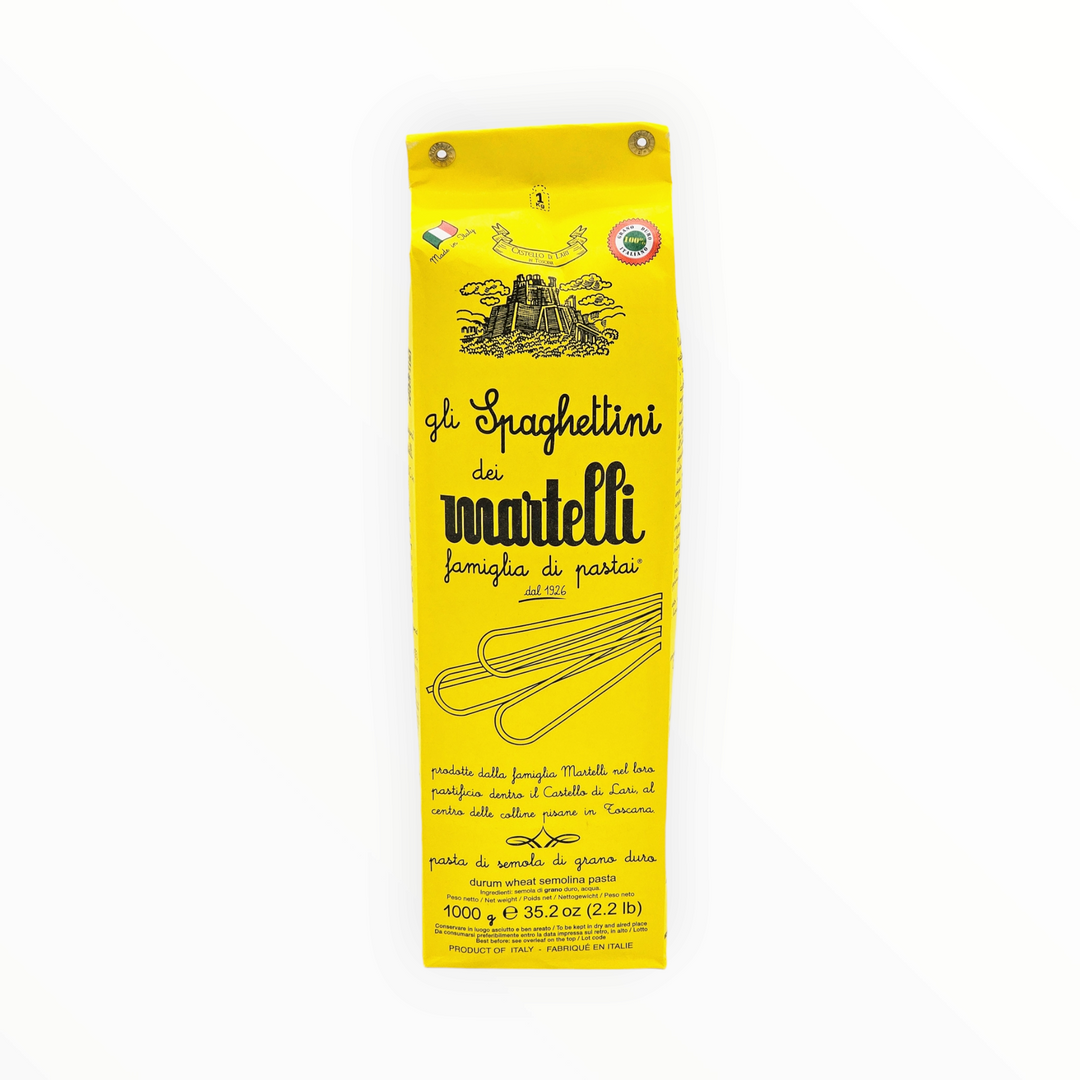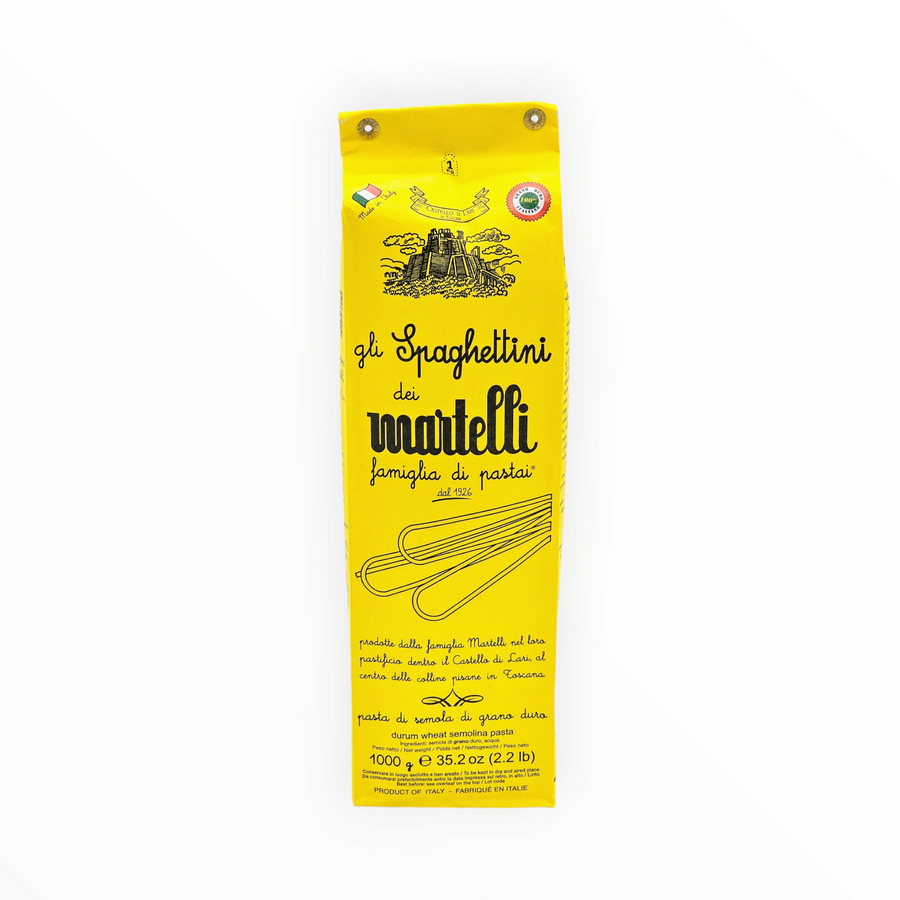The Martelli family's spaghettini comes in the distinctive yellow 1-kilo package. Since it's handmade, there's no precise thickness measurement.
The production is lower than the demand and therefore the pasta is sometimes (temporarily) sold out.
Martelli pasta comes from Lari, a town in the heart of Tuscany, in the province of Pisa, 65 kilometers from Florence and 75 from Siena. Pure idyll nestled between olive groves and vineyards, a majestic castle with views all the way to the sea, narrow streets, charming shops, two cafés, two butcher shops, an enoteca, and 1,200 residents. An insider tip off the beaten track.
There, the Martelli family business produces its five types of pasta: spaghetti, spaghettini, fusilli, penne and maccheroni.
The Martellis use only semolina made from local durum wheat. The dough is slowly mixed with water and slowly pressed through bronze dies. This creates the legendary rough surface, the ultimate in pasta making.
However, bronze pressing is expensive. Therefore, industrial producers use Teflon-coated dies – resulting in largely smooth surfaces. The principle of slowness continues with the drying process. "50 hours at 35 degrees Celsius," explains Luca Martelli, "mass producers could shut down. They'd rather accept the disadvantage that during the 90-degree rapid drying, some of the starch gels, resulting in a rubbery consistency." Martelli, then. Hardly any star chef in Tuscany uses any other pasta.
Dino Martelli – pasta producer
The 70-year-old—a certificate identifies him as a Cavaliere della Repubblica, the recipient of Italy's highest honor—is the head of a family clan that includes his wife Lucia, daughter Laura, son Luca, brother Mario, his children Chiara and Lorenzo, and Chiara's husband Giacomo. Famiglia di Pastai, the pasta family.
Their pasta factory in Lari is one of the best addresses in the country.
Hersteller
Martelli - Famiglia di PastaiVia dei Pastifici, 3, 56035 Lari PI, Italien
Allergene
- Glutenhaltige Getreide
- Sojabohnen




